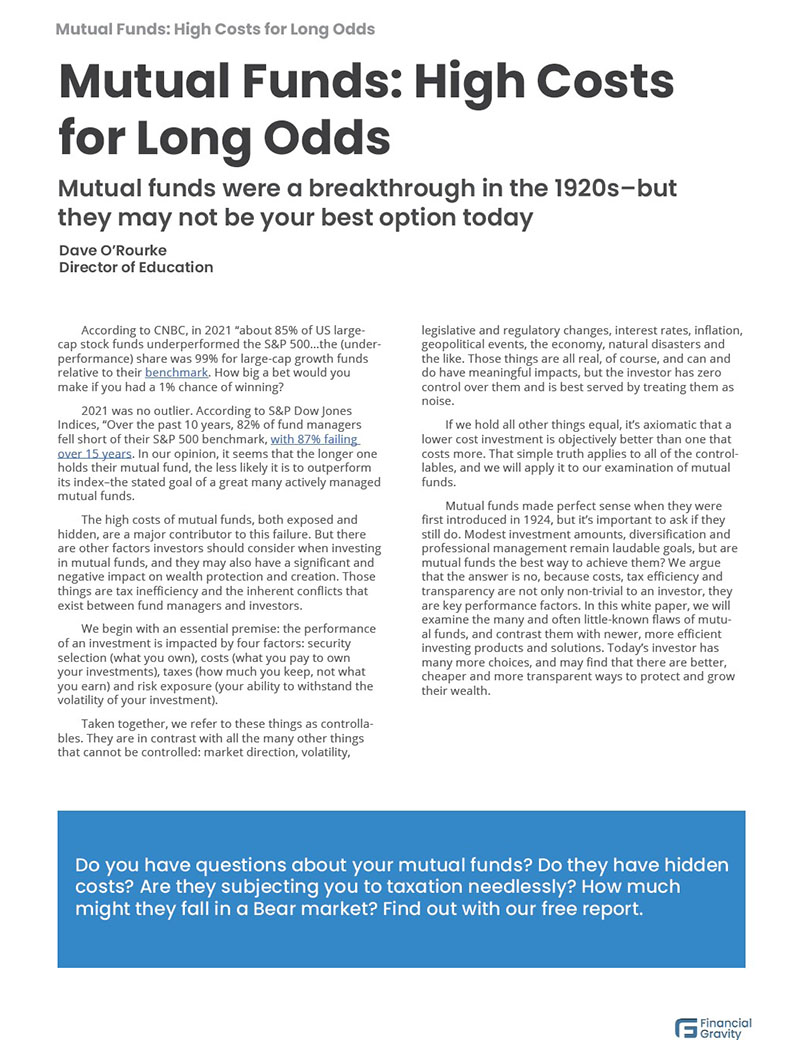It Takes a Thief
There is a famous story involving Joseph P. Kennedy about the market crash of 1929. When a shoeshine boy offered a stock tip to Kennedy, he immediately sold out his stock positions, thereby avoiding the carnage of the crash. No one knows if the story is true, but it’s been a part of investing lore for decades. “When the shoeshine boy is giving tips, it’s time to get out,” Kennedy is supposed to have said.
Kennedy enjoyed a storied career as an investor known for his timing. He built much of his wealth before the SEC was created and was believed to have profited from insider trading and the practice of pumping-and-dumping, a phrase that describes hyping a stock to drive the price up and then selling. In a piece of historical irony, Franklin Roosevelt appointed Kennedy as the first chairman of the SEC, saying at the time that, “It takes a thief to catch a thief.”
The days of insider trading and pump-and-dump schemes are long over, as we’re sure Martha Stewart will attest. Stewart did time in federal prison for selling ImClone stock the day before ImClone’s drug was rejected by the FDA, thereby avoiding a loss of just $51,000. For practical purposes, there is no more insider trading in the U.S., and investors rely solely on public information when buying and selling stocks.
Sometimes, it’s the public information that gets investors in trouble today. Investors hear that a hot stock is rapidly rising, and analysts on the financial shows say the stocks are rating a “buy,” and a behavior known as Fear of Missing Out, or FOMO, is triggered.
Shoeshine Boys Are All Around Us
FOMO can apply to the entire market, not just an individual stock. This happened during the dot-com bubble between 1995 and 2000, when the NASDAQ composite rose 800%, only to fall subsequently by 78%, erasing all of its gains. Some individual stocks did much worse. You may remember Pets.com, Webvan, and Global Crossing, among many others, whose market cap actually reached zero, a 100% loss.
We thought it might be useful to look at two such stocks that are still traded and still going concerns, Amazon and Peloton. Amazon is one of the best-known and largest companies in the world, while Peloton has reached the status of cautionary tale.
Amazon, which first went public in 1998 as an online bookseller, debuted at $18 per share. Adjusted for the subsequent splits, the original price was just 7 ½ cents. Its first year saw a 967% price increase. Bezos utterly charmed the analysts on Wall Street, but Amazon was not immune from the wreckage of the bubble bursting. Amazon lost 79.56% of its value in 2000, and another 30.46% in 2001. That’s a cumulative 85% loss in two years.
Over the years, Amazon has diversified its revenue streams significantly. Its online stores’ revenues, selling just about anything and everything, are now just above 40% of its total top line, while third-party seller and subscription services make up over 31%, and AWS, its vast cloud computing network, is about 15%. Amazon is a huge, diversified company with over $89 billion in cash on hand.
It took real intestinal fortitude to hang on to Amazon during the Tech Wreck, but investors who did so have handsomely profited. Amazon first showed a profitable year in 2003, when it made $35 million. In just the first quarter of 2024, Amazon had a profit of $10.4 billion. Its first-quarter profit was almost 300 times its yearly profit of 21 years earlier.
The pandemic was unprecedented in living memory for Americans. Forced inside for months, it disrupted the American economy in profound ways, affecting the way we work, how we shop, and how we congregate. Zoom, the online meeting platform, exploded in price from under $70 on January 1st to $492 per share on October 9th, 2020. At that point, Zoom’s market cap exceeded that of all publicly traded American airline companies combined. Today, Zoom is trading in the $68 range.
In five years, Zoom went from about $68 per share to…$68 per share. In the interim, however, the stock rose and fell $424 per share. Perhaps this nearly perfect price symmetry is a sign that the pandemic is truly and finally over.
There was another company that benefited from the pandemic: Peloton. Locked out of their gyms, Americans embraced working out at home, and Peloton took off. The stock, which began 2020 in the low 30s, reached $167.42 on January 13, 2021, a gain of over 500%. At that all-time high, its market cap was $49.3 billion, and its P/E was a breathtaking 389. Some analysts predicted it would go higher.
Millions of people around the world enjoy their Peloton, and the company had revenues in 2023 of $644 million. It is not currently profitable, however, but Peloton is doing the things that unprofitable companies do: firing its CEO and laying off 15% of its workforce. Its market cap is currently about $1.8 billion. The intraday share price of Peloton stock on October 9 was $4.75, over 97% off its peak.
Will Peloton come back? Who knows. But we do know that it has not diversified its revenues, and there are many rivals and substitutes that offer similar products and services for lower prices.
Human Nature and Investing Don’t Mix
FOMO explains the panic buying and the rapid price rises, but in stock trading there is also the sell side. What happens when an investor has gotten in early and enjoyed a solid gain in a stock like Amazon or Peloton? They are then faced with another inherent investor behavior, the Disposition Effect.
The Disposition Effect can hurt an investor as stocks rise and as they fall. This behavioral impulse causes an investor to sell winners too early, and therefore miss much of the upside, but it also causes investors to hang on to losers, in the mistaken belief that the stock will recover.
Studies have shown that the Disposition Effect causes investors to do precisely the opposite of what they should do. In our experience, it tends to work like this: an investor who is in early on a hot stock becomes anxious to declare victory, momentarily happy with a 30%, 50%, or even a 100% gain. But in the case of all the companies we’ve mentioned here, that would leave the huge majority of the gains on the table.
Conversely, investors who got in late in the run-up and see the stock begin to crumble will simply not accept that they have missed out, and will hang on and ride the stock down until they capitulate. They just cannot accept the idea that they have made a mistake. In both cases, this gets deeply into human psychology.
Successful investors are able to recognize their emotional drivers and remain disciplined. A good practice is to set reasonable stop-loss targets and stick with them, but a better practice is to recognize when a stock is in FOMO mode. That doesn’t mean they should avoid the trade, just that they will need to watch the stock very carefully for signs that the run is over.
Investors in Amazon can look back at the company’s history and see valid reasons for its success: great, visionary leadership, competitive value for customers, diversified revenue streams, and the explosion of cloud computing. Investors in Peloton, however, will have to face the facts: the pandemic would not last forever, the space is filled with rivals, and gym rats like the gym.
Whether you pick a winner or back a loser, concentrating significantly on individual stocks is a risky business, and probably is unwise for most people. Structuring a broadly diversified portfolio and employing patience and discipline is a safer and proven way to build real wealth over time.








